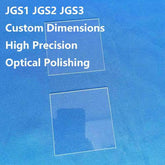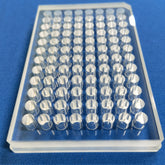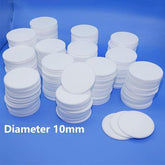Light reflection of sapphire glass
Sapphire is composed of aluminum oxide (Al₂O₃), a material that offers processing advantages that make it a popular choice for a variety of applications where high strength, optical clarity and chemical resistance are required. This mineral is frequently utilized as a gemstone or for industrial applications, and it is capable of exhibiting reflective properties. However, it should be noted that the reflectivity of the sapphire is contingent upon several factors, including surface finish, the incident angle of light, and the wavelength of light.
In general, sapphire glass possesses a comparatively high reflection index, which results in its ability to bend and decelerate light as the light passes through it, thereby causing light to be reflected from its surface. This property gives the sapphire its corresponding lustre and brilliance, making it a popular choice for gemstone jewellery. However, it is noteworthy that sapphire glass can also exhibit transparency, thereby allowing light to pass through it without significant reflection.

The reflectivity of sapphire is also subject to variation according to the surface finish. In the case of a highly polished and smooth sapphire glass surface, higher reflectivity may be exhibited. Conversely, a rough or textured surface may scatter light, resulting in lower reflectivity. In addition, the reflectivity of sapphire also depends on the incident angle of the light. When light irradiates on the sapphire glass surface at a specific angle (called a critical angle), total internal reflection occurs, causing the light to bounce back and reflect off the surface with little loss of intensity. This phenomenon is frequently utilized in optical applications, such as sapphire windows used in high-voltage chambers or optical lenses.

Sapphire glass can exhibit reflective properties, but the degree of reflectivity depends on a variety of factors, such as the surface finish, the incident angle of the light, and the wavelength of the light. They range from highly reflective to transparent, depending on these factors and how they are used in different applications. The reflectivity of sapphire glass also depends on the wavelength of light, and can show different reflectance at different wavelengths, some of which reflect more strongly than others.






